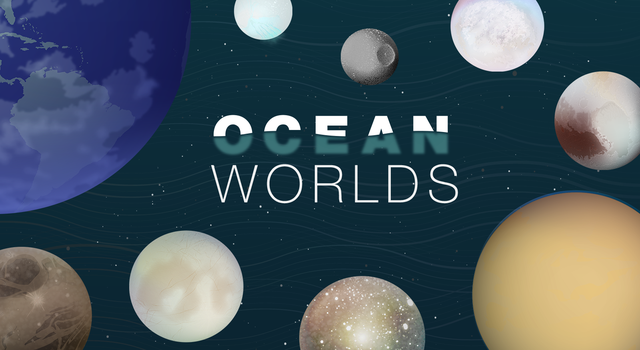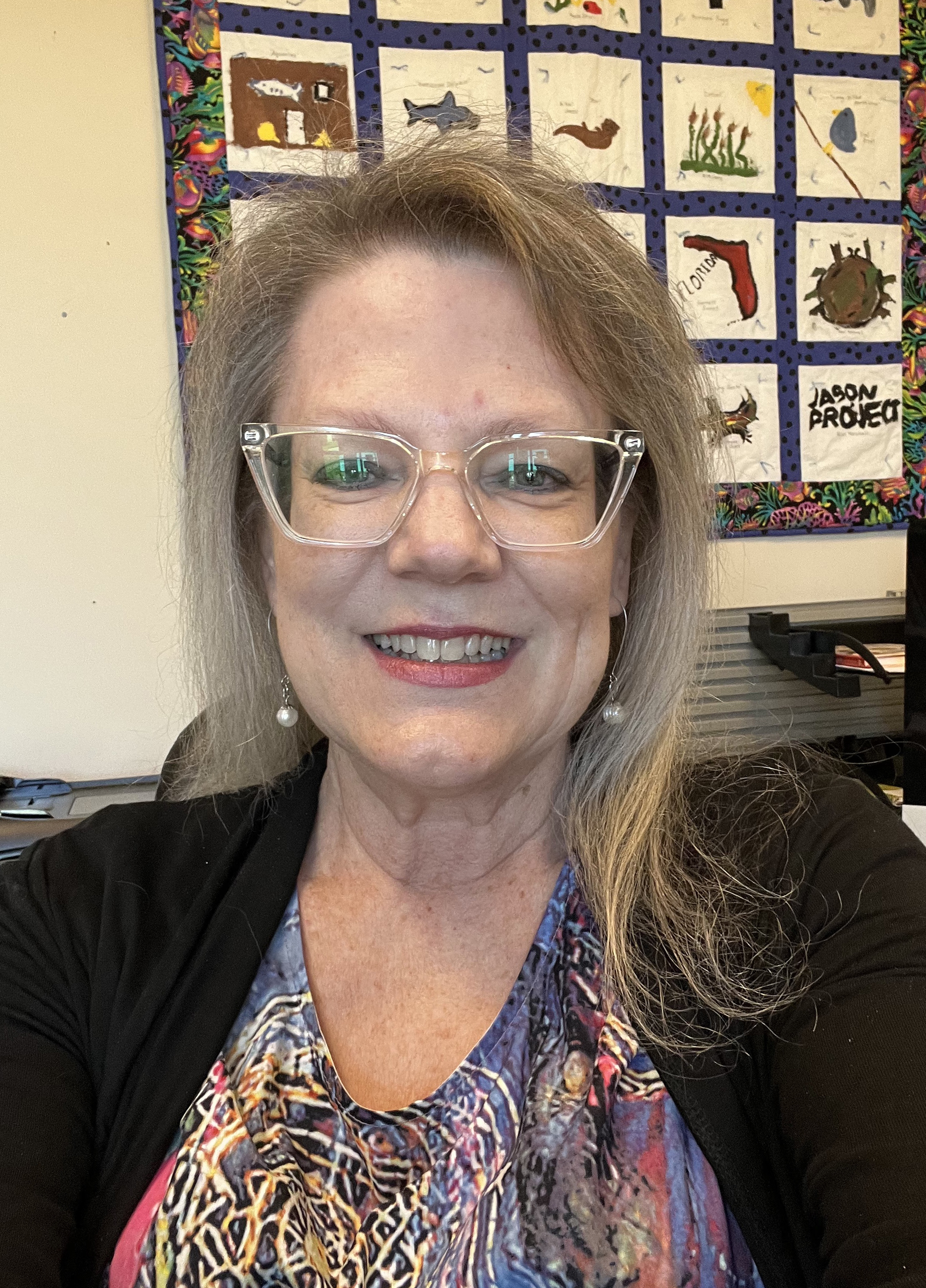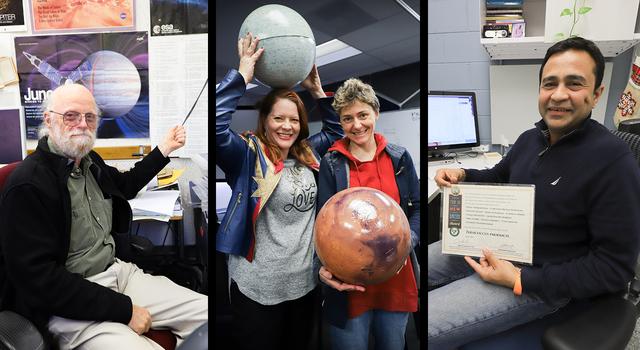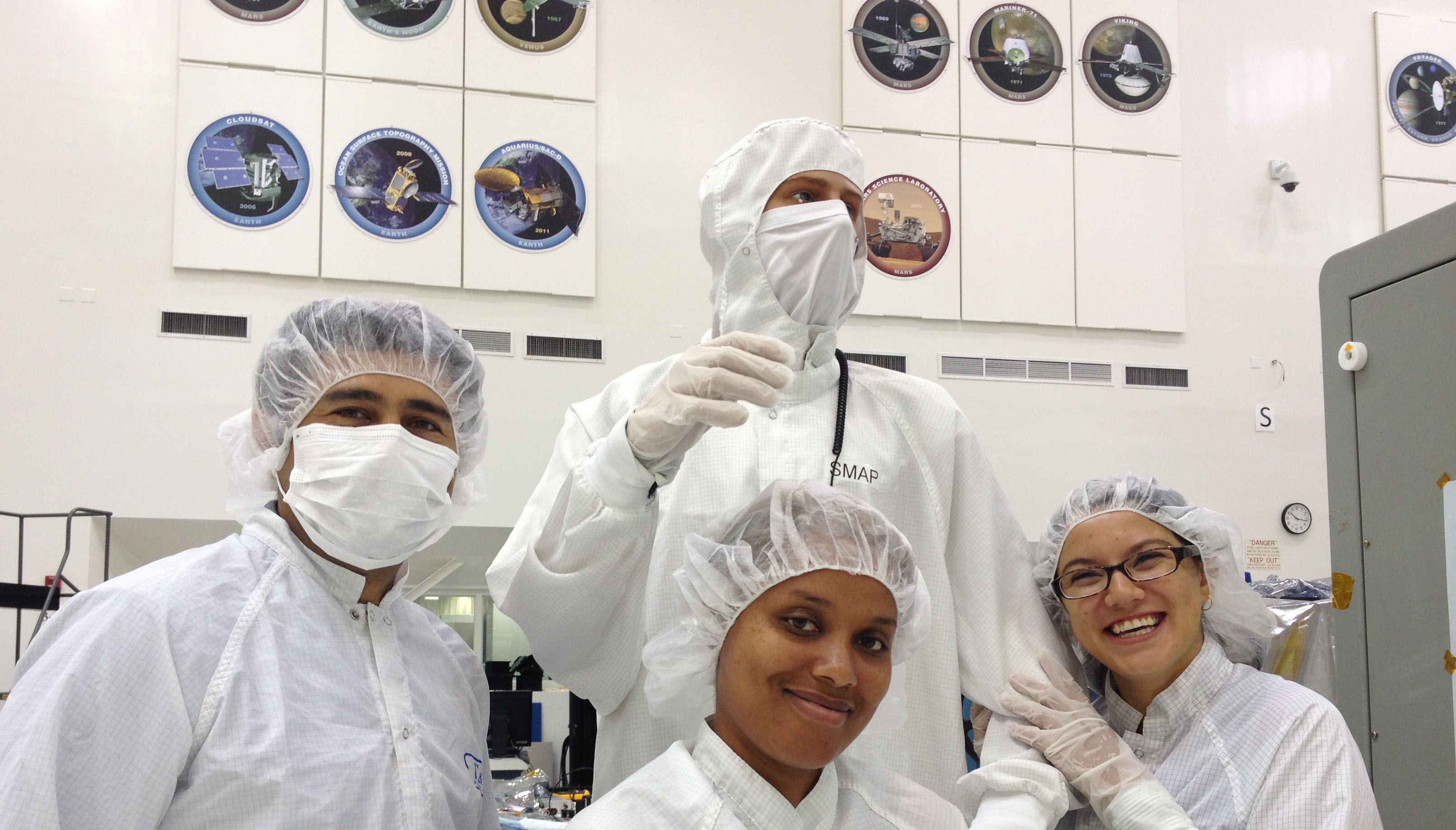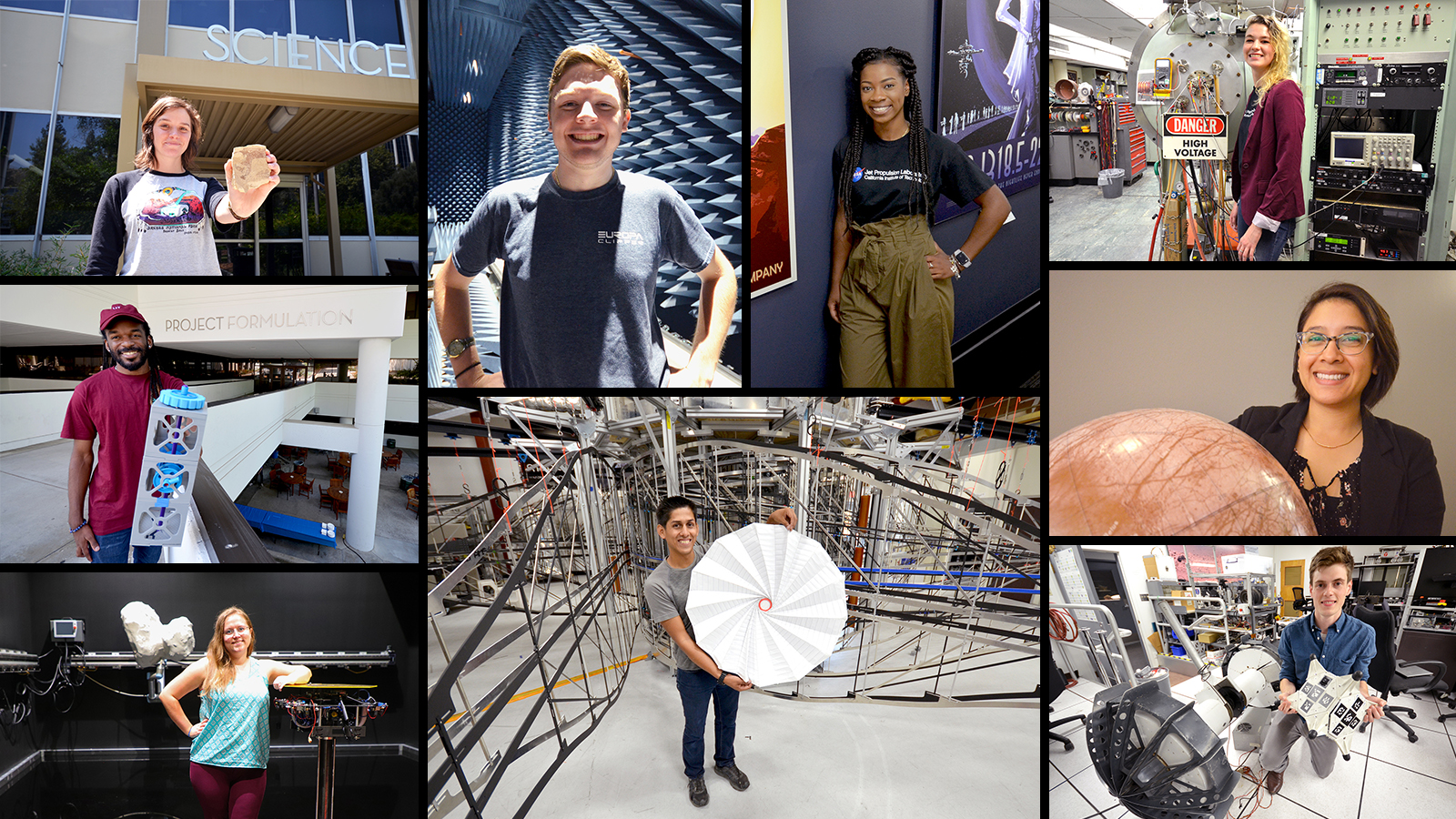Teachable Moments | August 16, 2024
Exploring the Next Frontier in Our Search for Life With Europa Clipper
Get the inside scoop on the Europa Clipper mission and its journey to explore an icy moon of Jupiter that could have conditions suitable for life. Plus, find ways to bring the excitement of the mission to your students.
In October, NASA's Europa Clipper mission will launch on a journey to investigate one of the next frontiers in our search for life beyond Earth. Its destination: Jupiter's moon Europa. Beneath its icy crust, the small moon is thought to contain a saltwater ocean with more water than all of Earth’s oceans combined. By studying the moon up close with a suite of scientific instruments, Europa Clipper aims to improve our understanding of the conditions on Europa and explore whether the moon could be suitable for life.
Read on to learn why scientists are so interested in this tiny ocean world and get to know the science behind the Europa Clipper mission. Then, follow along with the mission in the classroom using STEM teaching and learning resources.
Why Explore Europa?
In recent years, scientists have discovered likely water worlds throughout our solar system that might harbor conditions suitable for life. But scientists are especially intrigued by Jupiter's moon Europa because it hosts several components that make it one of the most promising for harboring a habitable environment.
Slightly smaller in size than Earth's Moon, Europa is one of Jupiter’s 95 officially recognized moons. Europa was discovered along with Jupiter's three other largest moons more than 400 years ago by astronomer Galileo Galilei, and named by astronomer Simon Marius, who discovered Europa around the same time.

This artist's concept shows a simulated view from the surface of Jupiter's moon Europa. Credit: NASA/JPL-Caltech | + Expand image
Scientific observations of Europa by previous spacecraft, including the Galileo mission to Jupiter, point to the existence of a subsurface salty ocean. These observations included spectroscopic measurements indicating the surface is mostly water ice; gravitational and moment-of-inertia measurements indicating a layered internal structure, including a water and ice layer near the surface that is 62 miles (100 kilometers) thick; and magnetic field measurements indicating a conductive layer near the surface. A salty ocean would explain these observations.
Though Europa has been studied by the Galileo spacecraft and the more recent Juno spacecraft with a few up-close flybys, Europa Clipper will allow us to build on previous findings to gain new perspectives on the moon with a Europa-dedicated mission.

The surface of Jupiter's icy moon Europa is visible in this view made from images taken by NASA's Galileo spacecraft in the late 1990s. Image credit: NASA/JPL-Caltech | + Expand image
Europa’s surface is crisscrossed by long, linear fractures, cracks, ridges, and bands. This ice shell is probably 10 to 15 miles (15 to 25 kilometers) thick. Evidence suggests that below Europa’s icy surface there is a saltwater ocean that is about 25 times deeper than Earth's oceans and contains about twice as much water. Scientists are hopeful that the Europa Clipper mission will refine these estimates.
In addition to water, Europa could have other conditions needed for life as we know it, including chemistry, energy, and stability. NASA scientists believe that six essential chemical building blocks for life exist on Europa and have likely existed there since Europa formed. These common elements are carbon, hydrogen, nitrogen, oxygen, phosphorus, and sulfur.
Chemical energy, similar to that produced by hydrothermal vents found on Earth’s ocean floor, may also exist on Europa’s sea floor. As Europa orbits Jupiter, it gets stretched and released by the tug of gravity from the giant planet. This process, called tidal flexing, creates heat, much in the same way a paperclip that is repeatedly bent back and forth can get hot to the touch. This tidal flexing process could keep the ocean liquid and may also be creating heat that could be released through hydrothermal vents on the ocean floor. On Earth, hydrothermal vents spew forth heated water, minerals, and various chemicals that react with the salty ocean, releasing stored chemical energy.
Where did life originate on Earth? Could the process hold clues for finding life elsewhere? Credit: NASA/JPL-Caltech | Watch on YouTube
Radiation surrounding Jupiter is another possible source of fuel for life in an ocean below Europa's surface. Jupiter’s strong radiation bombards Europa, which is bad news for anything attempting to live on the surface. But the radiation splits apart water molecules at the surface. Once the water molecules are split, the hydrogen floats away into space and the oxygen stays behind, making it available to bind to other elements. If the oxygen makes its way to the ocean through cracks or openings, it could react with other chemicals to provide chemical energy for microbial life.

Compare the oceans of Earth and Europa. Image credit: NASA/JPL-Caltech | + Click for full image and description
In addition to these potentially life-supporting conditions, observations indicate that the environment on Europa has likely remained constant for four billion years. Environmental stability is important to allow time for life to form and evolve. Such a promising stable environment is ripe for further exploration.
Europa Clipper Science
The Europa Clipper spacecraft will be the largest in NASA’s planetary mission history, measuring 16 feet (five meters) in height. Its giant solar arrays, the largest space-faring solar arrays to date, unfold in space to span the length of a basketball court, more than 100 feet (30.5 meters), and cover 950 square feet (90 square meters). Such an enormous light-collecting area is required because the intensity of the Sun near Jupiter is only 3% of what it is on Earth, and the massive arrays need to capture enough sunlight to power Clipper’s science instruments.
Europa Clipper has a powerful suite of nine science instruments designed to work together to study Europa’s surface features, improve our understanding of the moon’s icy shell, examine the interaction between the ocean and the icy shell, and investigate the ocean’s composition to determine if it has the ingredients to sustain life.
Exploring Europa’s Icy Surface
The spacecraft will collect images and generate surface maps using its onboard cameras and spectrometers which can identify chemical signatures from reflected light. The Europa Imaging System contains wide-angle and narrow-angle cameras, which will produce high-resolution color and stereoscopic images of Europa. These cameras will study Europa's geologic activity and measure surface elevations. The Europa Thermal Emission Imaging System will use infrared light to measure surface texture and characterize warmer regions where the liquid ocean may be closer to the surface. It will also show any visible evidence of water eruptions. The Europa Ultraviolet Spectrograph will use a telescope to collect ultraviolet light to help determine the makeup of Europa's sparse atmospheric gases and surface materials. It will also search for signs of plumes erupting from the surface.
A mass spectrometer and dust analyzer will measure the composition of tiny particles in Europa’s extremely thin atmosphere and surrounding environment. The mass spectrometer, or MASPEX, will analyze gases in Europa’s sparse atmosphere and in any plumes, as well as the chemical makeup of the ocean. The Surface Dust Analyzer will identify the chemistry of solid material ejected from Europa to offer clues about the surface composition and ocean salinity.
Examining Europa’s Icy Shell and Sub-surface Ocean
The spacecraft will search for water under Europa’s surface using radar and will gather magnetic field measurements with a magnetometer. An ice-penetrating radar instrument called REASON will examine the ice structure and thickness. It works by transmitting radio waves that bounce off of features within the ice, like cracks or pockets of water. By measuring the time difference between transmission and return, REASON will learn how far the features are from the spacecraft, and therefore, how deep they are in the ice. This highly specialized and advanced radar can also measure differences in the composition of materials on Europa. It does this by measuring the energy difference between transmitted and returning signals and combining them with distance measurements.

This artist's concept illustrates two possible cut-away views through Europa's ice shell. In both, heat escapes, possibly volcanically, from Europa's rocky mantle and is carried upward by buoyant oceanic currents. Image credit: NASA/JPL-Caltech/Michael Carroll | + Expand image
The Europa Clipper Magnetometer works by measuring small changes in Europa’s magnetic signal and how they vary with time and location. Measuring Europa’s magnetic signal could confirm the existence of an ocean and will help determine the ocean’s depth and salinity as well as the thickness of the moon's icy shell.
These instruments work in conjunction with several other instruments to closely study Europa during the flybys and return data for scientists to analyze for years to come. Explore a full list of instruments and learn how they work on the Europa Clipper mission website.
Getting to Europa
To save fuel for its journey to Europa, the spacecraft will follow what’s known as a Mars-Earth Gravity Assist trajectory for its 5.5-year journey. This path will first take the spacecraft near Mars to get a gravity assist – a boost in momentum obtained by tugging on Mars, thereby slightly decreasing Mars’ orbital momentum while transferring that momentum to the spacecraft. Next, Europa Clipper will swing back by Earth for another gravity assist before continuing on to Jupiter for its scheduled arrival in April 2030.

This graphic shows the Mars-Earth gravity assist trajectory the Europa Clipper spacecraft will follow to reach Jupiter. Credit: NASA/JPL-Caltech | + Expand image
Once it arrives, Europa Clipper will orbit Jupiter in an elongated ellipse that will bring the spacecraft close to Europa about 50 times. The orbit was designed in this way to decrease the impact of Jupiter’s radiation on the spacecraft, which can damage its electronics. Studies show that a spacecraft orbiting Europa may survive for a few months, while one orbiting Jupiter would last for many years. After each close flyby of Europa, the spacecraft will travel outside Jupiter’s radiation belts to downlink data to Earth, uplink new commands, and prepare for the next flyby.

Known as a petal plot for the way it resembles petals of a flower, this diagram displays the orbital path around Jupiter the Europa Clipper spacecraft will take as it explores Europa. Credit: NASA/JPL-Caltech | + Expand image
Follow Along
The Europa Clipper spacecraft is scheduled to launch in October 2024 from Kennedy Space Center in Florida. Tune in to watch the launch on NASA TV.
Visit the Europa Clipper mission website for all the latest mission updates, images, and science.
Teach Europa Clipper Science and Engineering
The Europa Clipper mission is a great opportunity to engage students with hands-on learning opportunities that range from imagining alien life forms to finding Jupiter in the night sky to engaging in the same science that led scientists to suspect the existence of Europa’s salty ocean. Explore these lessons and resources to get students excited about the STEM involved in this mission to determine if life-supporting conditions exist on Europa.
For Educators
For Students
Explore More
Activities for Kids
- Build Your Own Spacecraft Paper Model
- Build Your Own Spacecraft Toy Bricks Model
- Print a 3D Model of Europa Clipper
- Downloadable Europa Clipper
- Europa Clipper Mission Posters, Stickers, and More
Websites
Videos
Image Gallery
Articles
TAGS: K-12 Education, Educators, Teachers, Parents, Science, Astrobiology, Jupiter, Europa, Ocean, Teachable Moments
Edu News | January 24, 2020
Mentors Point the Way to STEM for Interns at NASA-JPL
Each year, 1,000 students come to NASA's Jet Propulsion Laboratory for internships at the place where space robots are born and science is made. Their projects span the STEM spectrum, from engineering the next Mars rover to designing virtual-reality interfaces to studying storms on Jupiter and the possibility of life on other planets. But the opportunity for students to "dare mighty things" at JPL wouldn't exist without the people who bring them to the Laboratory in the first place – the people known as mentors.
A community of about 500 scientists, engineers, technologists and others serve as mentors to students annually as part of the internship programs managed by the JPL Education Office. Their title as mentors speaks to the expansiveness of their role, which isn't just about generating opportunities for students, but also guiding and shaping their careers.
"Mentors are at the core of JPL's mission, pushing the frontiers of space exploration while also guiding the next generation of explorers," says Adrian Ponce, who leads the team that manages JPL's internship programs. "They are an essential part of the career pipeline for future innovators who will inspire and enable JPL missions and science."
Planetary scientist Glenn Orton has been bringing students to JPL for internships studying the atmospheres of planets like Jupiter and Saturn since 1985. He keeps a list of their names and the year they interned with him pinned to his office wall in case he's contacted as a reference. The single-spaced names take up 10 sheets of paper, and he hasn't even added the names of the students he's brought in since just last year.
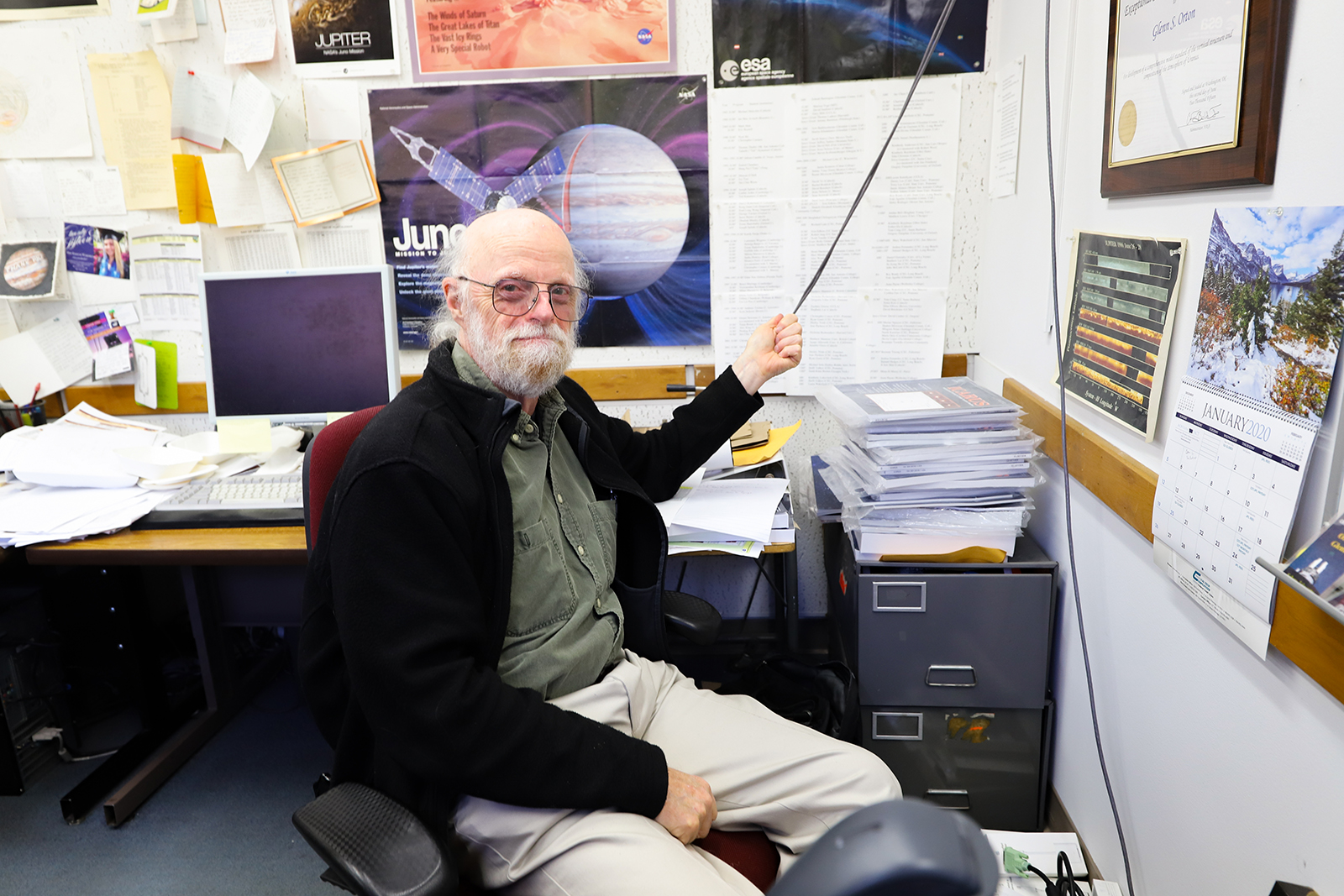
Planetary scientist Glenn Orton points to the list of more than 200 interns he's brought to JPL since 1985. Image Credit: NASA/JPL-Caltech | + Expand image
It makes one wonder what he could need that many students to do – until he takes out another paper listing the 11 projects in which he's involved.
"I think I probably have the record for the largest number of [projects] at JPL," says Orton, who divides his time between observing Jupiter with various ground- and space-based telescopes, comparing his observations with the ones made by NASA's Juno spacecraft, contributing to a database where all of the above is tracked and producing science papers about the team's discoveries.
"Often, you get to be the first person in the world who will know about something," says Orton. "That's probably the best thing in the world. The most exciting moment you have in this job is when you discover something."
Over the years, Orton's interns have been authors on science papers and have even taken part in investigating unexpected stellar phenomena – like the time when a mysterious object sliced into Jupiter's atmosphere, sparking an urgent whodunnit that had Orton and his team of interns on the case.
Orton says his passion for mentoring students comes from the lack of mentorship he received as a first-generation college student. At the same time, he acknowledges the vast opportunities he was given and says he wants students to have them, too.
"As a graduate student, it was close to my first experience doing guided research, so I had no idea how research was communicated or conducted," says Orton of his time at Caltech, when he often worried that his classmates and professors would discover he wasn't "Nobel material." "I want to be able to work with students, which I sincerely enjoy, to instruct them on setting down a research goal, determining an approach, modifying it when things inevitably hit a bump, as well as communicating results and evaluating next steps."
For Alexandra Holloway and Krys Blackwood, the chance to provide new opportunities isn't just what drives them to be mentors, but also something they look for when choosing interns.
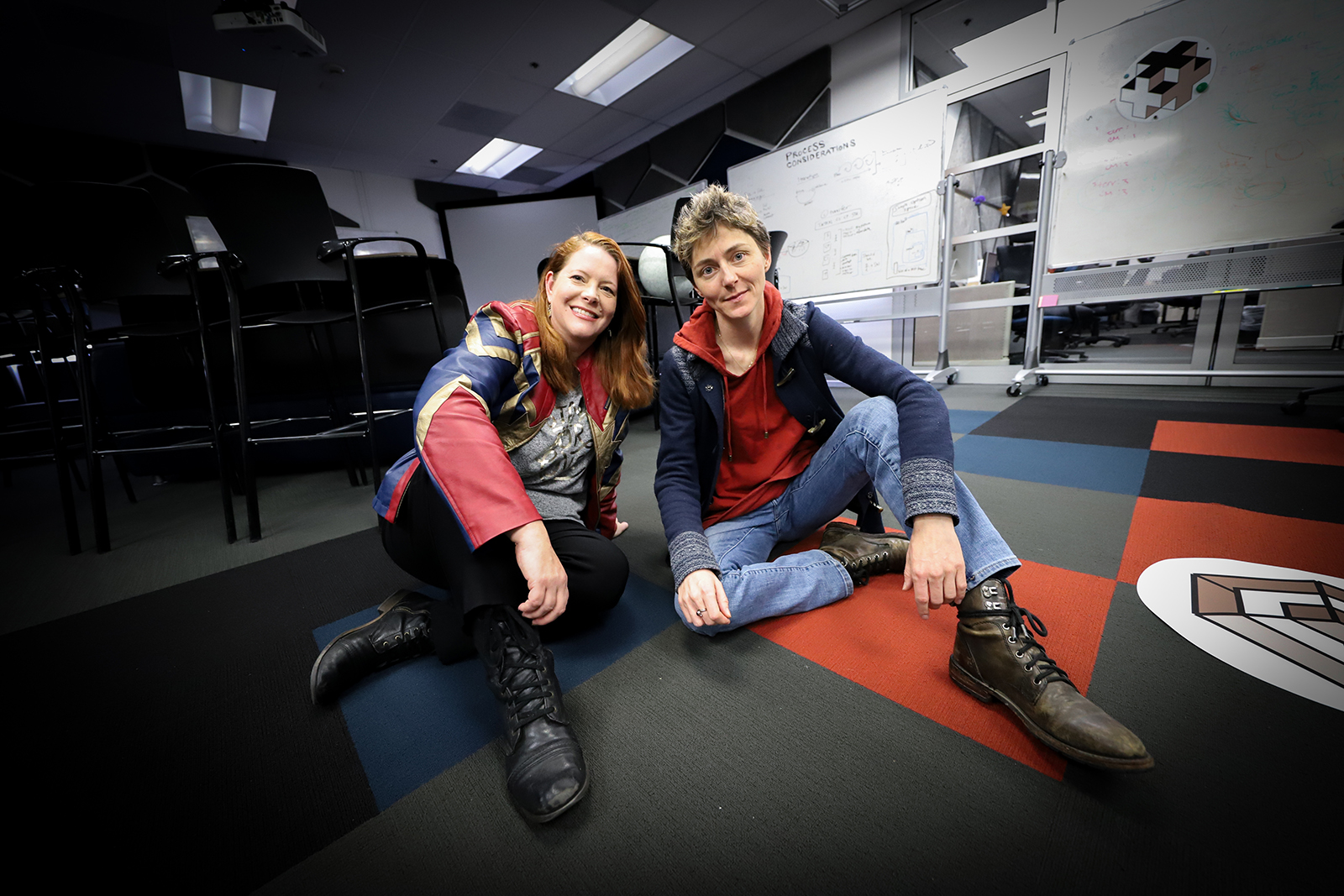
Krys Blackwood (left) and Alexandra Holloway work as a team to mentor students on projects that bring a human focus to robotic technology. Image Credit: NASA/JPL-Caltech | + Expand image
"I look for underdogs, students who are not representing themselves well on paper," says Holloway. "Folks from underrepresented backgrounds are less likely to have somebody guide them through, 'Here's how you make your résumé. Here's how you apply.' The most important thing is their enthusiasm for learning something new or trying something new."
It's for this reason that Holloway and Blackwood have become evangelists for JPL's small group of high-school interns, who come to the Laboratory through a competitive program sponsored by select local school districts. While less experienced than college students, high-school interns more than make up for it with perseverance and passion, says Blackwood.
"[High-school interns] compete to get a spot in the program, so they are highly motivated kids," she says. "Your results may vary on their level of skill when they come in, but they work so hard and they put out such great work."
Holloway and Blackwood met while working on the team that designs the systems people use to operate spacecraft and other robotic technology at JPL – that is, the human side of robotics. Holloway has since migrated back to robots as the lead software engineer for NASA's next Mars rover. But the two still often work together as mentors for the students they bring in to design prototypes or develop software used to operate rovers and the antennas that communicate with spacecraft across the solar system.
It's important to them that students get a window into different career possibilities so they can discover the path that speaks to them most. The pair say they've seen several students surprised by the career revelation that came at the end of their internships.
"For all of our interns, we tailor the project to the intern, the intern's abilities, their desires and which way they want to grow," says Holloway. "This is such a nice place where you can stretch for just a little bit of time, try something new and decide whether it's for you or not. We've had interns who did design tasks for us and at the end of the internship, they were like, 'You know what? I've realized that this is not for me.' And we were like, 'Awesome! You just saved yourself five years.'"
The revelations of students who intern with Parag Vaishampayan in JPL's Planetary Protection group come from something much smaller in scale – microscopic, even.
Vaishampayan's team studies some of the most extreme forms of life on Earth. The group is trying to learn whether similar kinds of tough microbes could survive on other worlds – and prevent those on Earth from hitching a ride to other planets on NASA spacecraft. An internship in Planetary Protection means students may have a chance to study these microbes, collect samples of bacteria inside the clean room where engineers are building the latest spacecraft or, for a lucky few, name bacteria.
"Any researcher who finds a new kind of bacteria gets a chance to name it," says Vaishampayan. "So we always give our students a chance to name any bacterium they discover after whoever they want. People have named bacteria after their professors, astronauts, famous scientists and so forth. We just published a paper where we named a bacterium after Carl Sagan."
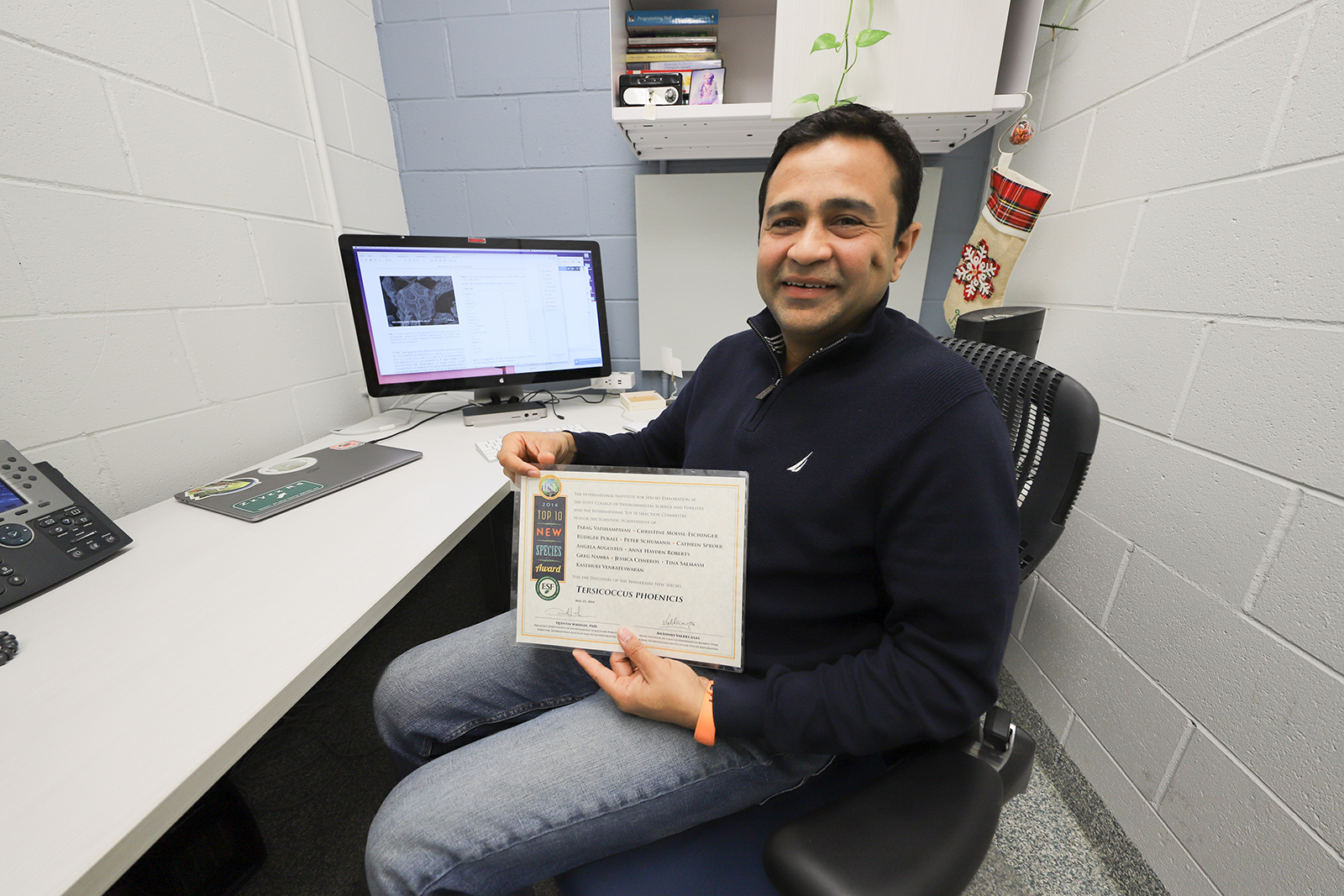
Students who intern with Parag Vaishampayan in JPL's Planetary Protection group might have a chance to name bacteria. Here, Vaishampayan holds an award he and his team (including several interns) received for their discovery of a bacterium they named Tersicoccus phoenicis. Image Credit: NASA/JPL-Caltech | + Expand image
The Planetary Protection group hosts about 10 students a year, and Vaishampayan says he's probably used every JPL internship program to bring them in. Recently, he's become a superuser of one designed for international students and another that partners with historically black colleges and universities, or HBCUs, to attract students from diverse backgrounds and set them on a pathway to a career at the Laboratory.
"I can talk for hours and hours about JPL internships. I think they are the soul of the active research we are doing here," says Vaishampayan. "Had we not had these programs, we would not have been able to do so much research work." In the years ahead, the programs might become even more essential for Vaishampayan as he takes on a new project analyzing 6,000 bacteria samples collected from spacecraft built in JPL's clean rooms since 1975.
With interns making up more than 15 percent of the Laboratory population each year, Vaishampayan is certainly not alone in his affection for JPL's internship programs. And JPL is equally appreciative of those willing to lend time and support to mentoring the next generation of explorers.
Says Adrian Ponce of those who take on the mentorship role through the programs his team manages, "Especially with this being National Mentoring Month, it's a great time to highlight the work of our thriving mentor community. I'd like to thank JPL mentors for their tremendous efforts and time commitment as they provide quality, hands-on experiences to students that support NASA missions and science, and foster a diverse and talented future workforce."
Explore JPL’s summer and year-round internship programs and apply at: jpl.nasa.gov/intern
Career opportunities in STEM and beyond can be found at: jpl.jobs
The laboratory’s STEM internship and fellowship programs are managed by the JPL Education Office. Extending the NASA Office of STEM Engagement’s reach, JPL Education seeks to create the next generation of scientists, engineers, technologists and space explorers by supporting educators and bringing the excitement of NASA missions and science to learners of all ages.
TAGS: Higher Education, Internships, Mentors, Research, Researchers, STEM, Interns, Juno, Jupiter, Science, Astrobiology, Planetary Protection, Computer Science, Design, Mentoring, Careers, Women at NASA
Meet JPL Interns | August 20, 2014
Going the Distance
I grew up moving around in the U.S. and Mexico, which made it hard to
keep up with school. I mainly struggled with my language arts classes,
but there were areas in which I excelled: math and science. I was in
high school when I decided I wanted to be a scientist; I was fascinated
by the explanations of the world through chemistry and physics. Although
I was living in Mexico at that time, I never gave up on the dream of
attending an American university to pursue my education. In 2010, my
family and I moved to California.
I was already a high school senior in
my last semester when I enrolled in school. I had already missed all
the university deadlines, hadn't taken the SATs and had to attend adult
school in the afternoon to make up for missing credits. Despite all of
that, I graduated on time and decided to attend the College of the
Sequoias, a local community college, where I am now majoring in
chemistry. (I will be transferring to the University of California, Los
Angeles in the fall!)
During my freshman year, I heard about the NASA National Community
College Aerospace Scholars Program, and I decided to give it a shot. I
used my basic knowledge of chemistry to write a series of proposals for a
mission to Mars that included a timeline, budget and rover design.
Based on my individual performance, I was selected on a competitive
basis to attend the on-site team project at NASA's Jet Propulsion
Laboratory. There were about 40 students from all over the U.S. We were
split into four teams to put our ideas together and build a rover. We
called our team "Red Planet Research" and our rover was named "Isis."
(It was my birthday!) Through this I experience, I saw what it takes to
be a NASA scientist and engineer. I also discovered that I wanted to
become one of the JPL scientists who are involved with exploration
missions. I was hooked on studying the Earth and planets. I returned to
my school excited for what was to come and shared my excitement with
others. I am happy to say that four students from my community college
participated in NCAS this year at JPL.
In August of 2013, I
received an email from NASA Education saying that I had been selected to
receive the Minority University Research and Education Program (MUREP)
scholarship! The program guarantees two summer internships at any NASA
center. Right away, I knew I wanted to come back to JPL. Although I come
from a small community college, I managed to be a competitive applicant
due to my involvement with science, technology, engineering and
mathematics programs, such as the Mathematics Engineering Science
Achievement Program and the Society for Advancement of Chicanos and
Native Americans in Science.
This summer, for the first of my
two NASA internships as a MUREP scholar, I am working in the
AstroBiogeoChemistry (ABC) Lab measuring hydrogen and oxygen isotopes in
hydrated clay minerals. Our goal is to improve instrument precision and
techniques for possible future return-sample missions.
It's a
dream come true to finally work in a planetary chemistry and
astrobiology lab. I have the opportunity to meet researchers who are
passionate about their work and be involved in exciting research. But I
think the best part of the internship is my lab group. There are two
other interns, two post-doctorate interns, a Ph.D. student, and my
mentor. They all take the time to tell us about the work they're doing
and, most important, mentor us as rising scientists. Throughout my
experience, I have learned a lot about research, and I am inspired to
continue in the STEM field. I was nervous before coming to JPL and
didn't know what to expect, but being part of the ABC Lab has exceeded
all my expectations. I encourage all community college students to apply
for NASA opportunities.
Although my internship is coming to an end, I am happy to say that I will be back next summer to do more exciting research.
Learn more about JPL internships and fellowships
TAGS: Women in STEM, NCAS, Community College, Internships & Fellowships, Chemistry, Planetary Science, Astrobiology, Geology, Women in STEM, Hispanic Heritage Month, Women at NASA
Meet JPL Interns | July 29, 2014
Passion for Learning
Not many interns get the opportunity to study one of humanity's biggest questions: How did life emerge? But mechanical engineering major Jessica Nuñez is having the experience of a lifetime in search of the answer. Nuñez is interning this summer in the Planetary Sciences Section at NASA's Jet Propulsion Laboratory in Pasadena, California.
As part of a NASA Astrobiology Institute project led by Isik Kanik, Nuñez constructs and analyzes simulated hydrothermal vents, chimney-like structures that are hypothesized to have been the birthing grounds for the emergence of life. On a daily basis, she examines the chimneys, which she constructs herself through a chemical process, and analyzes them with one of her favorite tools on lab: an electron microscope. "It gets the coolest pictures," she said. "It's awesome to be exposed to technology here at JPL that I wouldn't be exposed to anywhere else." Nuñez observes the chimney's composition to see how its structure changes over periods of time. Along with her cohorts, she is hoping to see a chemical reaction similar to the one that scientists believe produced life on Earth.
Working closely with her mentors, Mike Russell and Laurie Barge, Nuñez is eager to lend a helping hand in research that could answer such an important question. "There are a bunch of different pieces to this big puzzle to see how life could have surfaced," she said.
While Nuñez's ultimate career goal is to work in the engineering field, she is excited about the new challenges and experiences an internship in planetary sciences might offer. "It was kind of intimidating at first, but at the same time I was excited about all the possibilities JPL has and all there is to learn," she said. "I would like to get exposed to as much as possible, so it's exciting for me to get my foot in the door here and see what work I can do in the future."
This fall, the 22-year-old West Covina native is bidding adieu to Citrus Community College in order to sail into new terrains at the University of California, Berkeley. Nuñez believes she will have an edge as she enters a new academic chapter. "In a sense, I think this internship is preparing me to transfer, because I am learning something new every day, so it's nice," she said.
Whether she is taking a run in the neighboring mountains, or investigating the deeply webbed quest of life's emergence, Nuñez is thoroughly enjoying her internship experience. And like many scientists and engineers who venture to JPL, she is already planning for her future endeavors. "I would love to continue working here, maybe even in different areas within JPL or other NASA laboratories," she said.
In the near future, she hopes to participate in developing missions to visit Europa and Enceladus, the icy moons of Jupiter and Saturn, widely regarded as the next frontiers in the search for life beyond Earth.
Says Nuñez, "I've never been into space or exposed to it, but now that I have, I love it."
TAGS: Women in STEM, Mechanical Engineering, Astrobiology, Internships & Fellowships, Citrus Community College, University of California, Berkeley, Hispanic Heritage Month, Women at NASA






